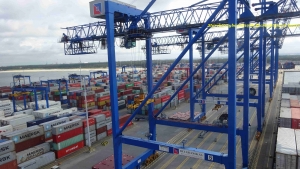Combined transport as an opportunity for decarbonisation

The European Green Deal promotes the transfer of 75% of inland road transport for rail and inland waterways transport. This is a challenge for ports and maritime transport. In practice, this means using intermodal transport. And this requires coordination at all stages of the logistics chain.
The draft European Green Deal recommends that the longest part of cargo journey from port to recipient should be by rail or inland waterways. Only the first and last miles are to be transported by car.
– This requires efficient handling equipment and technologies that make the transfer of loading units between transport modes quick and cost-effective – underlines the European Commission communication.
– Most (60-80%) of the transhipment capacity in the EU is provided by vertical handling technologies, followed by Ro-Ro vessels (20-35%). Only about 2 percent. reloading capacity falls today on other technologies – informs the report “Comparative Evaluation of Transhipment Technologies for Intermodal Transport And Their Cost” prepared for the European Commission by PricewaterhouseCoopers and KombiConsult.
Therefore, the modernization of railway networks in Polish ports is in line with the European Union trend of moving cargo from road to rail. Imports and exports of containers and wheeled cargo are mainly transported by car. It is therefore time to use the modernized railway connections not only for the transport of bulk cargo.
More: Marek Grzybowski: Combined transport
